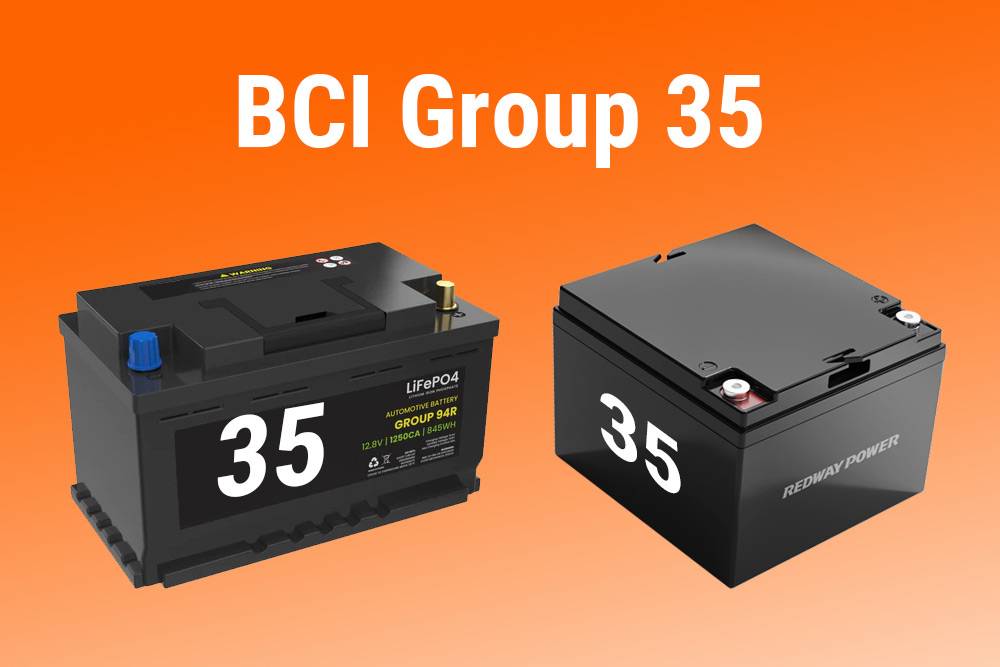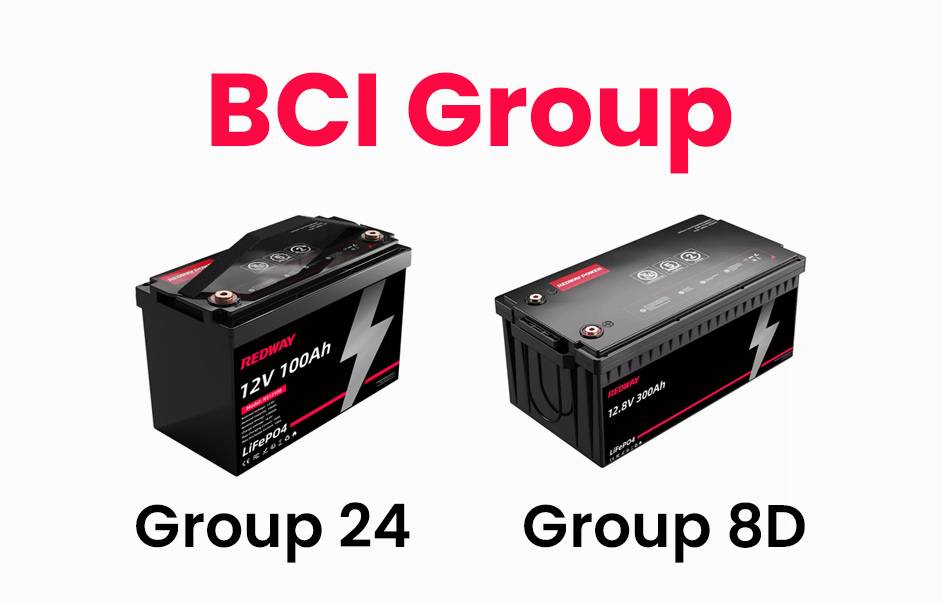Group 35 batteries are commonly used in various vehicles, including some models of the 2010 Kia Forte. However, it’s essential to verify the specific battery size and electrical requirements for your vehicle before making a purchase. Consulting the vehicle manual or a professional can provide guidance on battery compatibility.
What are BCI Group 35 Batteries?
BCI Group 35 batteries are a specific type of automotive battery designed to meet the size and performance standards outlined by the Battery Council International (BCI). BCI Group 35 batteries typically feature dimensions around 9 x 6 7/8 x 8 7/8 inches (9.0 x 6.875 x 8.875 inches, or approximately 229 x 175 x 225 mm), providing reliable starting power and support for essential vehicle electronics. They are commonly utilized in vehicles with substantial electrical demands, including large SUVs, trucks, and certain luxury vehicles.
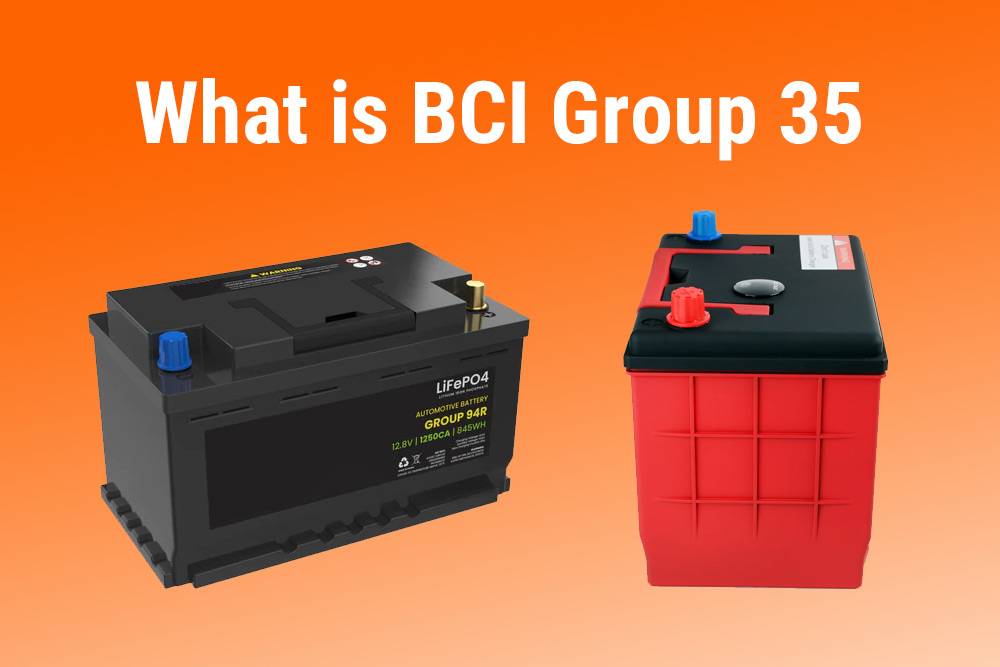
What are advantages of BCI Group 35 Batteries?
BCI Group 35 batteries offer several advantages:
- Compact Size: Group 35 batteries are relatively small and compact, making them suitable for vehicles with limited battery compartment space, such as compact cars and small trucks.
- Versatility: These batteries are versatile and can power a wide range of vehicles, including cars, trucks, SUVs, and some recreational vehicles.
- Reliable Starting Power: Group 35 batteries provide reliable starting power, ensuring that your vehicle starts smoothly even in cold weather conditions or after extended periods of inactivity.
- High Performance: Despite their compact size, Group 35 batteries often offer high performance in terms of cranking amps and reserve capacity, providing sufficient power to meet the demands of modern vehicle electronics.
- Wide Availability: Due to their popularity and widespread use, Group 35 batteries are readily available at most automotive stores, making it convenient to find replacements when needed.
- Affordability: Compared to larger batteries, Group 35 batteries are often more affordable, offering a cost-effective solution for vehicle owners.
Overall, the advantages of BCI Group 35 batteries include their compact size, versatility, reliable performance, availability, and affordability, making them a popular choice for many vehicle applications.
What devices typically use BCI Group 35 Batteries?
BCI Group 35 batteries are commonly used in various vehicles and devices, including:
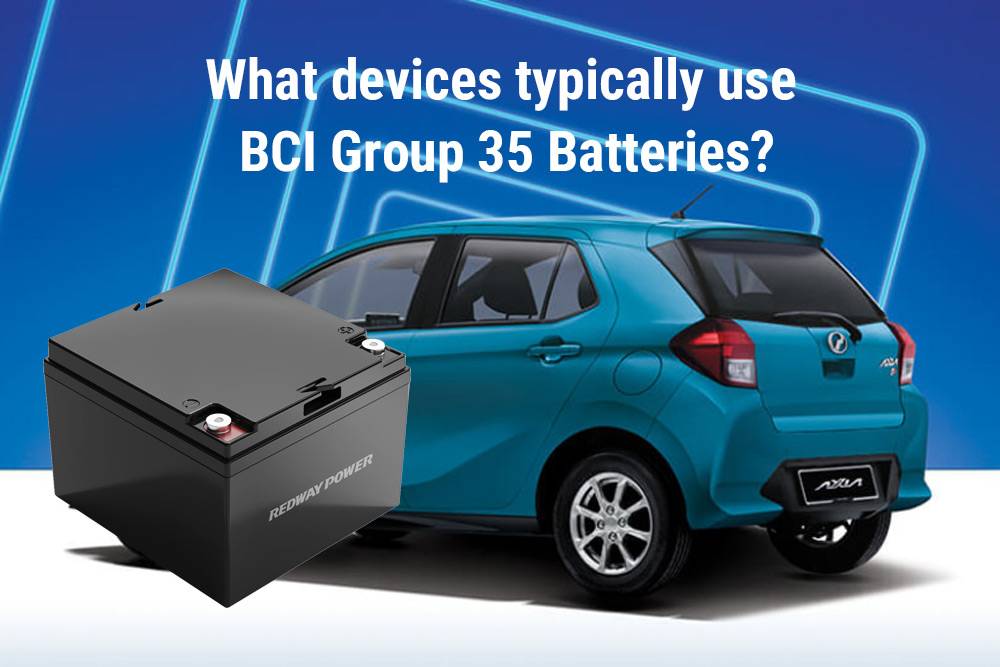
- Compact Cars: Group 35 batteries are frequently found in compact cars such as sedans, hatchbacks, and small SUVs.
- Small Trucks: These batteries are also used in small trucks and pickups that require a compact yet powerful battery.
- Recreational Vehicles (RVs): Some smaller RVs and camper vans may utilize Group 35 batteries to power auxiliary systems or as part of the main electrical system.
- Marine Applications: Group 35 batteries may be used in small boats or marine vessels to power onboard electronics, lights, and auxiliary equipment.
- Lawn and Garden Equipment: Certain lawn tractors, garden equipment, and utility vehicles may also use Group 35 batteries for starting and powering various accessories.
- Power Sports Vehicles: Some motorcycles, ATVs (all-terrain vehicles), and snowmobiles may be equipped with Group 35 batteries.
Overall, BCI Group 35 batteries are versatile and can be found in a wide range of vehicles and equipment where a compact yet powerful battery is required.
Best-Selling BCI Group 35 Batteries in 2024
Presented below is a chart featuring some of the top-rated BCI Group 35 batteries, along with their key attributes. The batteries are listed alphabetically for easy reference.
| Model | Battery Type
Battery Chemistry |
Ah
RC |
CCA
MCA |
Weight (lbs/kg) Review |
| Arc-Angel Group 35 | Starting LiFePO4 |
40 ~96 |
900 – |
16 lbs; 7.3 kg – |
| Bosch S6523B | Dual Purpose AGM |
53 110 |
650 780 |
40 lbs; 18.1 kg – |
| Delphi BU9035 | Dual Purpose AGM |
50 100 |
680 – |
40 lbs; 18.1 kg – |
| DieHard 38275 | Dual Purpose AGM |
50 100 |
650 – |
42 lbs; 19.0 kg – |
| NorthStar NSB-AGM35 | Dual Purpose AGM |
60 115 |
740 880 |
49 lbs; 22.2 kg – |
| Optima 8020-164 35 RedTop | Starting AGM |
44 90 |
720 910 |
31.7 lbs; 14.4 kg |
| Optima 8040-218 D35 YellowTop | Dual Purpose AGM |
48 98 |
620 770 |
36.4 lbs; 16.5 kg – |
| Odyssey 35-PC1400T | Dual Purpose AGM |
65 130 |
850 950 |
50 lbs; 22.7 kg – |
| Odyssey ODP-AGM35 | Dual Purpose AGM |
59 110 |
675 – |
45.9 lbs; 20.8 kg – |
| PowerTex PTLG35 | Dual Purpose LiFePO4 |
48 ~115 |
430 910 |
13.5 lbs; 6.1 kg – |
| XING CELL Group 35 | Dual Purpose LiFePO4 |
42 ~100 |
500 – |
13.6 lbs; 6.2 kg – |
Note: Amazon links in the table open in the new windows (‘Model’ column), feel free to check them for the most up-to-date prices and offers.
Group 35 Batteries Dimensions, Specs, Chemistry and Features
Group 35 batteries boast dimensions of approximately 9.0625 x 6.875 x 8.875 inches (230 x 175 x 225 mm), with some models slightly exceeding the standard length. Despite this, they are designed to fit most car battery compartments comfortably, with sufficient space for installation.
Most Group 35 batteries are spill-proof AGM batteries, catering to dual-purpose or starting applications. While declared as dual-purpose, they primarily excel in starting vehicles while offering decent cycling capabilities, crucial for powering modern vehicle electronics during engine-off periods.
Lead-acid Group 35 batteries, particularly AGM types, provide robust starting power and reliable performance, albeit with a heavier weight compared to lithium batteries. AGM batteries maintain functionality even in low temperatures, ensuring dependable operation in various conditions.
Lithium-ion batteries, particularly Lithium Iron Phosphate (LiFePO4) variants, offer a safe and efficient alternative to lead-acid batteries. Equipped with Battery Management Systems (BMS) for comprehensive protection, they serve as drop-in replacements for AGM batteries, delivering superior starting power despite their lighter weight.
However, it’s important to note that lithium batteries may experience operational challenges in low temperatures, where AGM batteries excel in maintaining consistent performance.
FAQs
What is the difference between a group 24f battery and a group 35 battery?
The primary difference lies in their physical dimensions and electrical specifications. Group 24F batteries are typically larger and have higher capacity compared to Group 35 batteries, making them suitable for vehicles with higher energy demands.
Can a group 24f replace a group 35 battery in a Mitsubishi Mirage?
While it’s possible to physically fit a Group 24F battery into a Mitsubishi Mirage, it’s essential to ensure that the replacement battery meets the vehicle’s electrical requirements and fits securely in the battery compartment. Consult the vehicle manual or a professional to determine compatibility.
Which is bigger group size 35 or 24 in car batteries?
Group size 24 batteries are generally larger than Group size 35 batteries. The difference in size corresponds to variations in physical dimensions and capacity between the two battery groups.
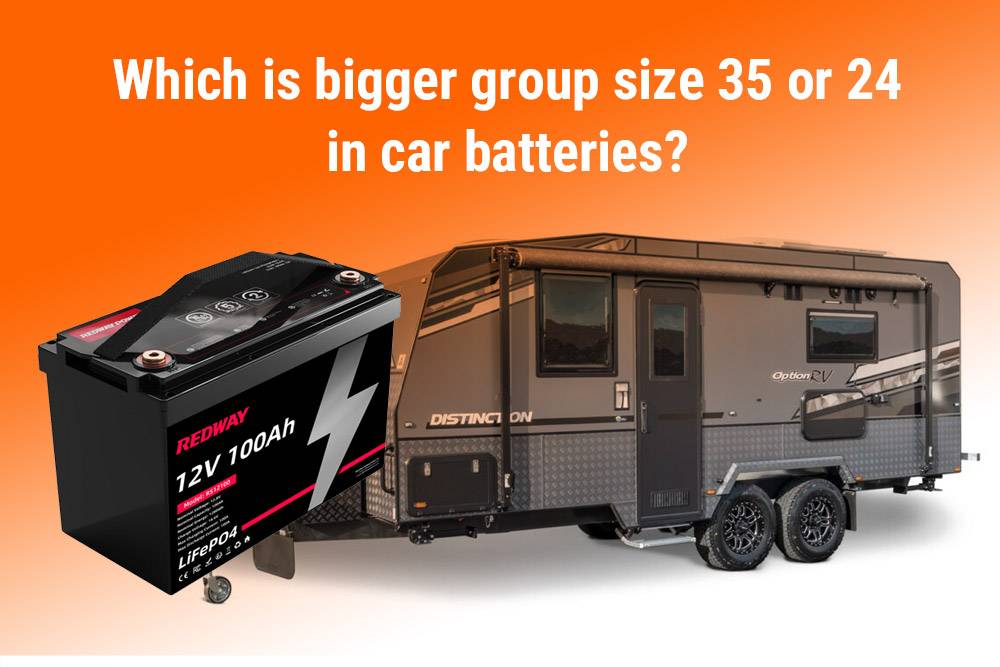
What is the difference between group 34 and 35 battery sizes?
Group 34 and Group 35 batteries differ in their physical dimensions and electrical characteristics. Group 34 batteries are typically larger and have higher capacity compared to Group 35 batteries, making them suitable for vehicles with higher energy demands.
Is a group 35 battery stronger than a group 24 at Walmart?
The strength of a battery depends on various factors such as its capacity, construction, and intended application rather than just its group size. Comparing specific batteries within each group, including their specifications and performance ratings, would provide a more accurate assessment.
Is a group 35 Duracell an AGM battery?
Duracell offers a variety of batteries, including AGM (Absorbent Glass Mat) batteries. Whether a specific Group 35 Duracell battery is an AGM type depends on the product specifications provided by the manufacturer.
How much does a group 35 battery weigh?
The weight of a Group 35 battery can vary depending on the brand, construction, and specific model. On average, Group 35 batteries typically weigh around 30 to 40 pounds.
Can I put a BCI group size 35 battery in a Nissan Altima Hybrid?
It’s essential to ensure that any replacement battery, including a BCI Group size 35 battery, meets the electrical requirements and fits securely in the battery compartment of a Nissan Altima Hybrid. Consulting the vehicle manual or a professional can provide guidance on compatibility.
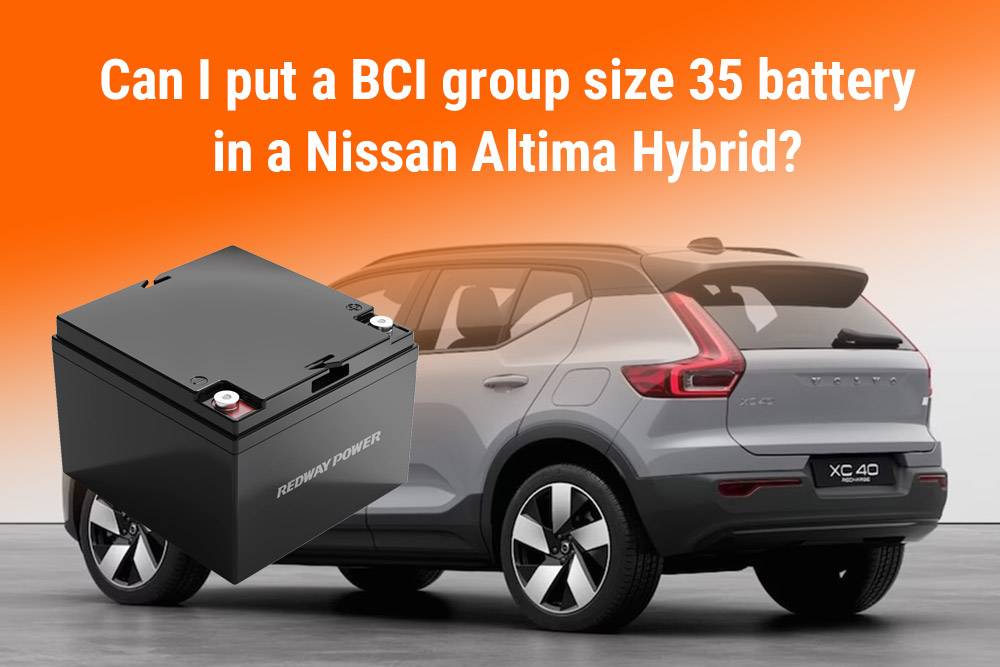
Which group 35 car batteries does Consumer Reports like best?
Consumer Reports evaluates car batteries based on factors such as performance, reliability, and value. Checking their latest reviews and ratings can help identify the group 35 car batteries recommended by Consumer Reports.

